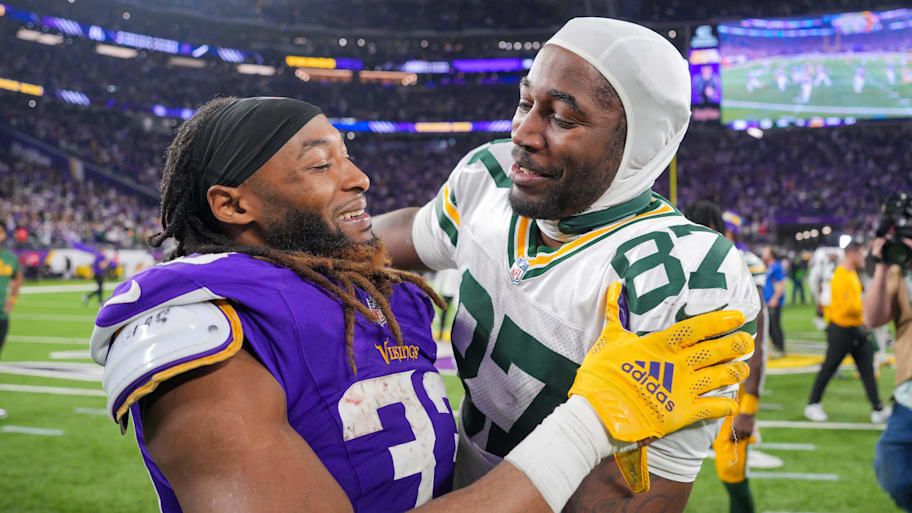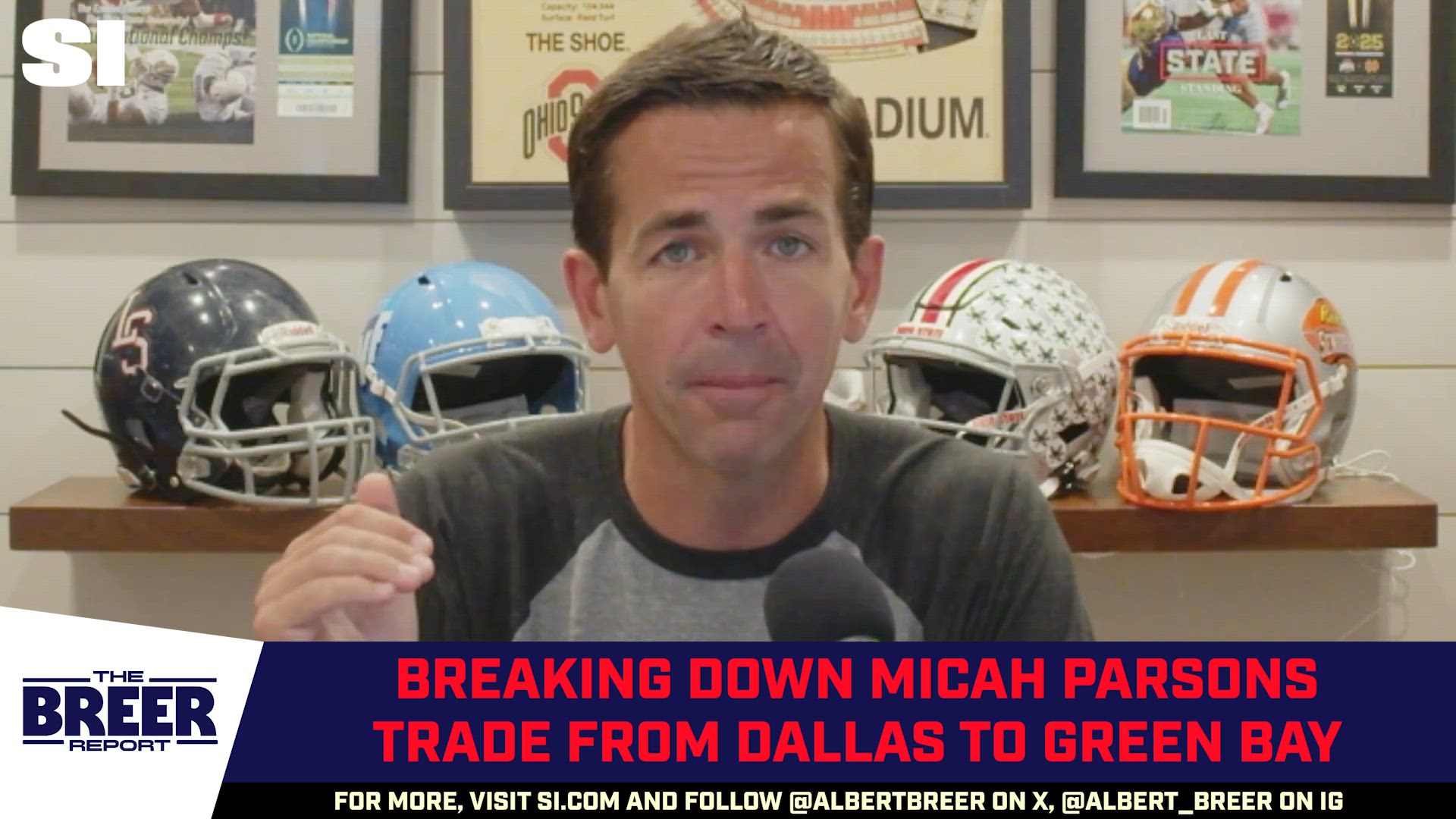
Aaron Jones is happy to steal a sign and burn his old team. Just ask him.
Before last season, the star running back signed with the Vikings, staying in the NFC North after seven years with the Packers. Watching a snap from the sideline against his old team, Jones did his best impression of a runner on second base, glaring into the catcher’s signs.
“When we played Green Bay, the [defensive backs] would do a little signal to each other behind their backs,” Jones told me during training camp. “Like if the receivers were in a stack position, if they were lined up pretty close on their releases, receivers can go either way. And if they have [man coverage], they would do a little signal behind their backs and that means top hat. You’re going to get the one who is going in, and I’m going to get the one who is going out. Or, I get the one deep and you get the in-breaker. Just knowing this is how they’re going to pass things off.”
Minnesota swept the season series against the Packers, scoring 29 points per game in the two victories. Sam Darnold threw for a combined 652 yards and six touchdowns.
Last year, the division won a combined 45 games, an NFL record for any four-team division. Of course, the 17-game schedule is a recent change that helps boost that number. Still, since the 16-game record was 42 victories co-owned by the 2007 AFC South and ’13 NFC West, there’s a strong argument to be made that last year’s NFC North was the strongest, deepest division of all time.
If anything, it could be even better in 2025 with the arrival of a generational defensive talent and a new starting quarterback, along with returning stars in Detroit and renewed hope in Chicago.
Green Bay wasn’t the only team to fall victim to a rival opponent recognizing a formation or signal in the North. Packers Pro Bowl edge rusher Rashan Gary has a similar story to tell.
“Especially playing on the defensive line, you know [right] and [left] words, show the slide protection with the quarterback point, center point, things like that,” Gary said of leveraging experience against familiar opponents. “Any type of small keys that we can get a read on, we’re for sure on it.”
While attempts to pick up on some of those keywords and indicators are universal around the NFL, they’re magnified within a division. Last season, Gary wouldn’t cop to which play, but says he notched a sack based on one of these stolen signs.
This is nothing new in the NFL. Every advantage is massive, no matter how small it may seem. Yet in the NFC North, where continuity has become king as evidenced by the head coaches having a combined 19 years within the division (fewer than only the AFC North), the smallest of edges could determine seasons.
“One of the things that happen when you do have continuity is plays and sequences of games, and results from the previous three years for me, you remember those plays,” Vikings coach Kevin O’Connell said. “You remember how you were defended. You remember a play your defense made against an opposing offense or a timely turnover that was forced on one side of the ball and had a huge impact on the game. You pretty much know things are going to be built on the foundation of success which has sustained in this division. I think that’s one of the reasons why when we’ve gone outside the division, our record has been pretty good across the board, because of our divisional games preparing us to play a certain way, a certain standard of football just to be competitive.”
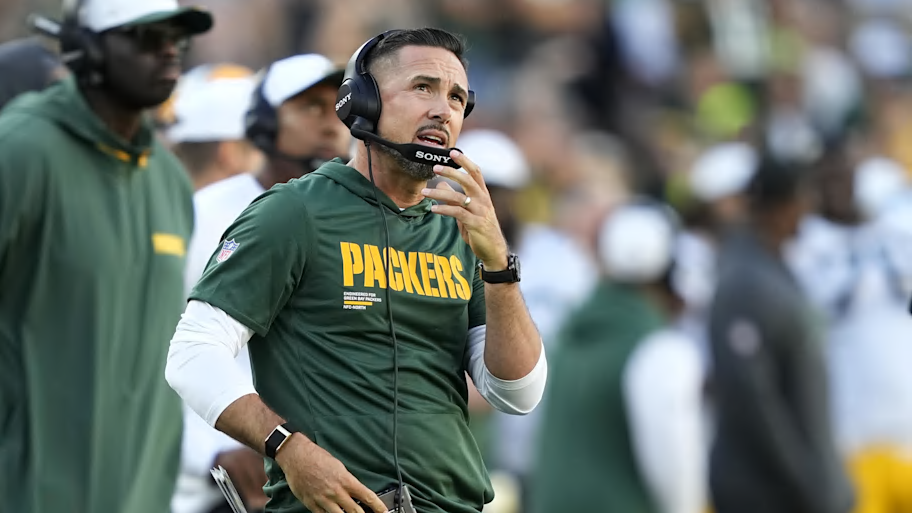
On the second Tuesday of June, Matt LaFleur was thinking about the distance between his Packers and the top of the NFC North standings.
Last season, the Packers went 1–5 in the division, including losses in all three home games against the Lions, Vikings and Bears.
It was the difference between being the NFC’s seventh seed and potentially playing a postseason game at Lambeau Field—the same building which shares the office he was sitting in, where he was trying to wrap his mind around the failures that kept Green Bay from seriously contending for a division title.
“There are a whole lot of things we have to improve upon,” LaFleur said. “More consistency with our passing game offensively. Defensively, we did a really good job of taking the ball away and we need that to continue. It’s reasonable to expect our players in year two of a system to hopefully take another jump. Take their game to another level. As a team, I thought there were a lot of times we could have been better in critical situations.”
For LaFleur, those situations were highlighted by Green Bay’s end-of-half play. Those issues were spotlighted in Week 9, with first place in the division on the line, when Jordan Love threw a pick-six to Lions safety Kerby Joseph, taking the game from 10–3 to a two-score deficit.
That was part of LaFleur’s frustration. Another part was falling behind quickly. Against Minnesota, Green Bay trailed 28–0 and 20–3 in their two contests, while slipping into 24–3 and 17–7 holes to Detroit, before making all four games closer in the end.
“I think it’s about being more intentional, understanding what’s at stake,” Packers star safety Xavier McKinney said about improving their play in the division. “Knowing whenever we go to play these division games, we’re going to get these teams’ best shots. I don’t think it’s a whole bunch [of things], necessarily, I think it’s about being a lot cleaner and a lot more detailed. Every team is going to be good. Every game inside the division is going to be a tough game. If we’re not detailed, that could cost us. We have a high level of understanding of that. I think this year we’ll have a much different approach.”
To that point, Gary highlighted a special teams error when the Packers were covering a punt against the Bears in Week 18. Green Bay failed to communicate which way to direct its coverage, leading to a 94-yard touchdown return by Josh Blackwell.
The details also include the secondary doing a better job against the top-tier weapons. In six games against star receivers Amon-Ra St. Brown, Justin Jefferson and DJ Moore, Green Bay allowed 42 receptions on 49 targets for 424 yards and three touchdowns. The front seven also has culpability, with just five sacks in four games against Detroit and Minnesota.
“Just like the confidence and communication with everything,” said Gary of where the team has tangibly improved in this area. “Where we are right now, we weren’t at this point last year. So talking about small things. In a football game, it comes down to two plays and not being on the same page for those two plays puts us in the loss [column]. Now we’re on the same page. Everybody’s communicating. I feel like the things we slipped up on last year, we’re already on top of now.”
Ultimately, the failures led to major changes, highlighted by the landmark trade to acquire edge rusher Micah Parsons, a two-time first-team All-Pro with 52.5 sacks in four NFL seasons. Parsons is arguably the league’s best defensive player and will fit perfectly into coordinator Jeff Hafley’s system, which blitzed second-least in the NFL last season, more than only the Jaguars, at 17.3%.
With Parsons, the Packers will be much more effective at getting home with four-man rushes. Last year, Green Bay was 16th in pressure rate at 22.1%. Now, with Parsons screaming off one edge and Gary set to see single blocks instead of doubles, the Packers have the ingredients to destroy worlds up front.
And if LaFleur and his team need motivation beyond the Lombardi Trophy, all they need to do is remember a comment that came from Halas Hall.
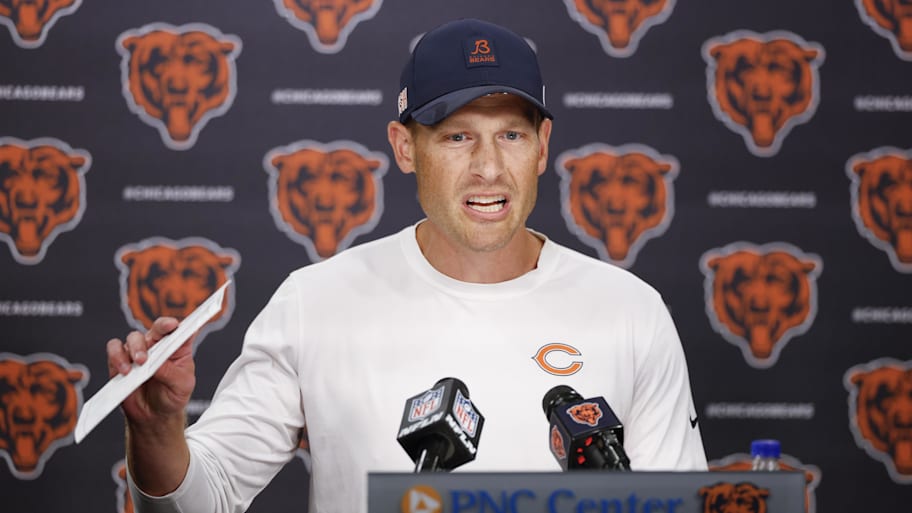
Ben Johnson is in Chicago, seeking to accomplish what he couldn’t do in Detroit: win the big one.
During his introductory press conference in January, Johnson praised O’Connell and Lions head man Dan Campbell for being Coach of the Year finalists before adding “and to be quite frank with you, I kind of enjoyed beating Matt LaFleur twice a year.”
The task may not be so easy this time around. Chicago improved in the offseason, but the Bears are coming from the cellar for myriad reasons. Chief among them? No ability to close.
“It’s all about hard work and consistency,” Bears edge rusher Montez Sweat said. “Being able to win those one-score, close games that we had a lot of. We were in position to win those games, we just didn’t come out on top. Just taking the extra step, whether that’s finishing in the fourth quarter or whatever the case may be. We’re right there."
To Sweat’s point, Chicago was 3–7 last year in one-score games. The offense was the culprit in six of those defeats, scoring more than 20 points in just one of those losses.
Johnson’s task is to fix that unit, something general manager Ryan Poles aided with by drafting tight end Colston Loveland and receiver Luther Burden III in the first two rounds, while also acquiring center Drew Dalman, and guards Jonah Jackson and All-Pro Joe Thuney. Those three linemen will play a key role in helping second-year quarterback Caleb Williams, who was sacked a league-high 68 times last season.
One of Johnson’s first self-appointed missions is to correct bad body language, including from the No. 1 pick in the 2024 draft. The issue was on national display against the Vikings in Week 15 on Monday Night Football, with Williams flailing on the bench after being repeatedly pressured.
Williams and Johnson have discussed the issue, something that will be an ongoing point of emphasis. At OTAs this spring, Johnson was firm about getting the details right.
Over the summer, the offense consistently had presnap issues, including four false start penalties in a joint practice against the Bills on Aug. 15. The following week in Chicago’s final preseason tune-up, the Bears trailed the Chiefs 17–0 with both teams playing their starters while Williams was 6-for-9 for 41 yards before Kansas City put in its second-string defense.
“He’s a really good [offensive coordinator],” said McKinney of Johnson. “Even last year, they did a lot of different things and he called a lot of different things that were outside the norm of what you typically see in the NFL. I think his creativity within what he calls is going to help them and make them a better team, better offensively. These teams have really talented players, and the Bears have a really talented quarterback. When you pair [Johnson] and a good, young quarterback and the pieces around them, I think it’s going to work well for them.”
If it does, Johnson will be the toast of the Windy City. If he flops, LaFleur might just revel in beating him a time or two.
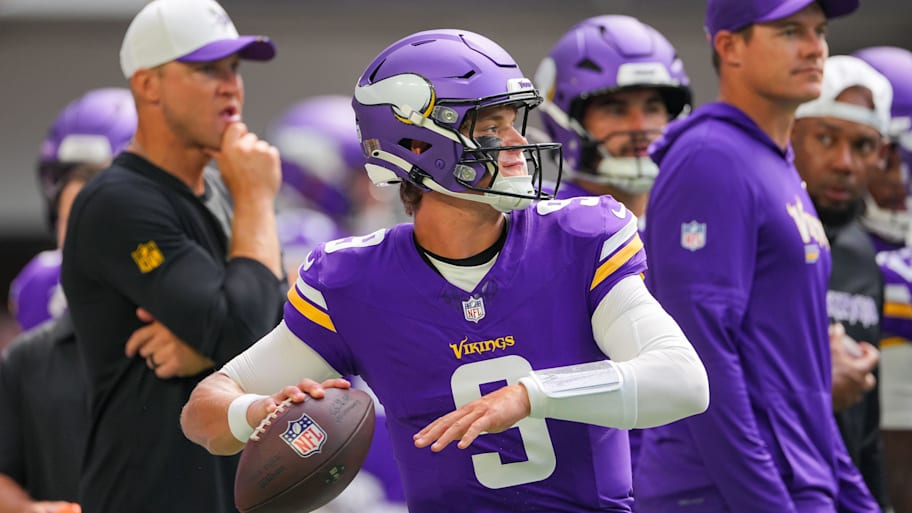
J.J. McCarthy’s moment has arrived.
Last year, a torn meniscus scuttled his rookie campaign. But with former Vikings starter Sam Darnold now in Seattle, McCarthy has both the job and a loaded roster around him. He also has the responsibility of carrying the weight of a fan base begging for a postseason winner.
It’s a responsibility O’Connell is both aware of and trying to spread around the building instead of placing entirely at the feet of his 22-year-old signal-caller.
“He’s a young quarterback playing for the first time in the NFL, you’re going to have challenges and growth moments that we all have to understand are going to happen,” O’Connell said. “But if we handle our business the right way, if we prepare our team the right way, J.J. is obviously going to be a critical part of our team as the quarterback, but we have to have an all-11 feel.”
McCarthy becomes the first quarterback to take over a team that won at least 14 games the prior season since the 1999 Broncos, who were coming off consecutive Super Bowl titles when John Elway retired. Since 2000, 75 quarterbacks have been drafted in the first round. Of them, just 17 have led their teams to the postseason as a first-year starter. Eight won at least one game once they got there. None made it to the Super Bowl.
The youngster is surrounded by a revamped offensive line with the signings of guard Will Fries and center Ryan Kelly, alongside left tackle Christian Darrisaw’s return from a season-ending knee injury. The improvements should pay dividends, as only four teams allowed a higher pressure rate than Minnesota last year.
Factor in O’Connell—a quarterback guru who finally gets his guy to work with—and the league’s fifth-ranked defense in points allowed, and Minnesota may be even more formidable as the year churns on.
“[O’Connell] is a great coach, and I think that about their whole staff," LaFleur said. “I think [defensive coordinator Brian] Flores has done an unbelievable job. You know you’re going to have to score points. They have a ton of weapons. They do a really good job of taking away the ball. Some of those looks are really challenging defensively. Brian is pretty aggressive in what they do from a schematic standpoint. You’ve got to be efficient and score some points because offensively, they just have so many weapons.”
Last year, the Vikings had seven players make the Pro Bowl, fourth-most in the league. They also have an elite one-two punch on the perimeter in Jefferson and Jordan Addison, who will miss the first three games due to a suspension. The duo combined for 2,408 receiving yards last season, the second-best of any combo in football behind the Bengals’ Ja’Marr Chase and Tee Higgins.
After losing in the wild-card round to the Rams last year, the Vikings have improved their roster and changed out the starting quarterback. They believe the pieces are in place to finally make a run at the Super Bowl, a place the franchise hasn’t visited since 1976.
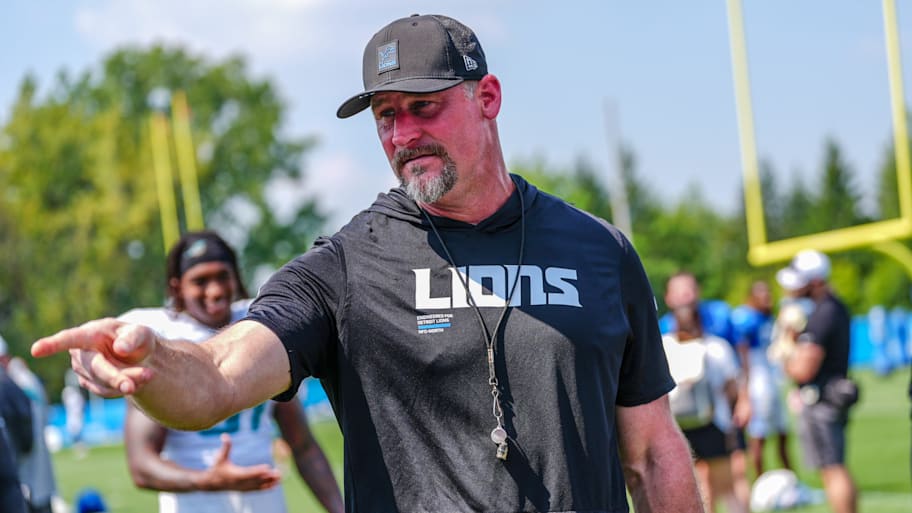
Dan Campbell doesn’t have the continuity he once enjoyed.
After four years of having Johnson and Glenn on the staff (Johnson became the offensive coordinator in 2022), John Morton and Kelvin Sheppard step into those respective shoes. While both have been on Campbell’s staff in Detroit, Sheppard has never been in charge of a unit, while Morton was the offensive coordinator in ’17 for a five-win Jets team that ranked 28th in offense.
“I think there are a lot of unknowns,” LaFleur said of Detroit’s revamped staff. “It’s definitely going to be more of a challenge to game plan for them in Week 1. We better be ready to adjust. The real challenge, in my opinion, is just the talent they have on that roster. It’s real. Dan [Campbell] is still there and the team does a great job of taking on his personality. He does a great job with that group.”
Yet the roster took some hits this offseason with the surprise retirement of All-Pro center Frank Ragnow and the departure of guard Kevin Zeitler. For years, the offensive line has been a staple, ranking top-10 each of the past three seasons in fewest sacks allowed. Suddenly, 2024 sixth-round pick Christian Mahogany and rookie second-rounder Tate Ratledge will step into starting roles inside.
Conversely, the Lions should be better due to getting defensive linemen Aidan Hutchinson and Alim McNeill back from season-ending lower-body injuries. If they return to form, the defense won’t be allowing 30.6 points per game (including playoffs) like it did over the final six contests of last season.
Still, the losses on the field and sideline make for uneasiness in the Motor City.
There’s mounting pressure coming from potential unfulfilled the past two seasons. In 2023, the Lions took a 17-point lead into halftime of the NFC championship game against the 49ers, only to see it dissipate. A year later, Detroit earned the NFC’s top seed for the first time ever, but failed to win a playoff game, instead bearing witness to Jayden Daniels’s coming out party in a 45–35 loss to the Commanders.
Entering 2025 with new coordinators, the Lions don’t have the reservoir of knowledge and experience on the sideline they once had within the division for key games. It could prove challenging, especially with games against the Packers and Bears to open the season. Still, the familiarity is there with a roster largely left intact and the remaining coaches being steeped in the division.
“Every team we play has a culture,” said reserve offensive lineman Dan Skipper, who has played 54 games for Detroit over his eight NFL seasons. “It has a style of play, it’s well established. You look at the body types and the type of players they all get. It’s kind of the same thing year in, year out. You know what schematically it’s going to be. You just get everybody’s best shot for six games.
“If you put any 10 guys from a team [in a line],” he said, “I could tell you, just by looking at them, that it’s Chicago, Minnesota or Green Bay.”
For the Lions, things are changing. The road through the division is one of them, though there are still constants to rely on.
Last year, the NFC North was historic. It set a divisional record in the post 1970 AFL-NFL merger era by scoring 26 points per game, led by Detroit, Minnesota and Green Bay, which all finished top-nine in points scored.
Yet the season ended on a sour note for all involved.
The 2024 NFC North was just the fourth division with three teams winning at least 11 games in the same campaign, joining the 1984 AFC West, 1985 AFC East and 2020 AFC North. The other three all won at least one playoff game. Since LaFleur’s 2019 arrival in Green Bay, the division has a playoff record of 5–9 with zero Super Bowl appearances under its current coaches.
For any of the four to reach their zenith, it starts by toppling the other three.
No small feat. Just ask them.
“Every team clearly has talent,” O’Connell said. “Every team has schemes that, when paired with their rosters and how they’re trying to play, present challenges. But the feeling I get in the division, regardless of being on the road or at home, you just have to play really good football to have a chance to win games. If you don’t, it’s incredibly difficult to win. The games are always four quarters. You have to play from start to finish. If there are any letdowns, teams are going to take advantage of it."
All four teams face a long, daunting road to Santa Clara. If any make the trip, it’ll largely come down to who plays best within the NFC North. And maybe who can steal a sign or two.
This article was originally published on www.si.com as How Familiarity Makes the NFC North the Toughest Division in the NFL.
